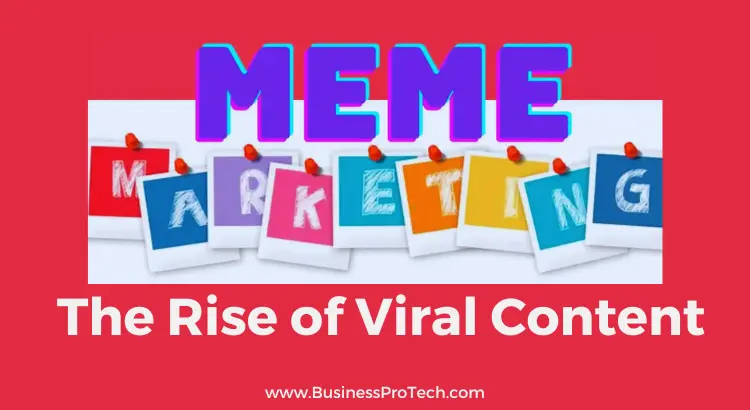The days of traditional marketing are fading away. In the digital age, where information dissemination is instantaneous, attention spans are shorter, and competition for eyeballs is more intense, viral content has taken the world by storm.
Memes, in particular, have emerged as an efficient way for brands to create ad hoc marketing campaigns. In this post, we’ll explore meme marketing, its impact on social media marketing, and proven strategies to capitalize on their viral nature.

Meme Marketing: An Overview
A meme is a humorous idea or concept that becomes widely shared online. It can be an image, video, GIF, or text, often based on pop culture or current events. Meme marketing, therefore, refers to using memes as a marketing tool to facilitate engagement and generate a viral response.
The Impact of Memes
- Capturing attention: Memes have the inherent ability to capture the audience’s attention. The combination of humor and relatability makes them irresistible, increasing the likelihood of being shared among users.
- Cultural relevance: Meme marketing ensures that a brand remains culturally relevant. By participating in popular conversations, brands can show they understand their audience, thus fostering a stronger connection.
- Cost-effectiveness: Compared to traditional marketing methods, memes are relatively inexpensive to create and share. Depending on the concept and execution, the return on investment (ROI) can be quite high.

Strive for Authenticity
Memes are often viral due to their genuine nature. Successful meme marketing campaigns maintain authenticity, ensuring the audience can easily relate. It’s vital to avoid over-promotional or forced content, which could deter potential customers.
For example, if you want to create a meme relevant to the feeling of missing someone, you could explore when you miss someone memes to find relatable and genuine templates. Learning from existing meme formats can provide insights into what resonates with your target audience.
Know Your Audience
Before creating a meme, the foremost thing you should do is identify your target audience. Research their preferences, interests, and what type of content resonates with them. With this information, memes can be curated, ensuring they appeal to the intended demographic.
Embrace Timeliness and Trending Topics
Timeliness is vital in meme marketing. Stay updated with current events, pop culture references, and trending topics on social media platforms. By engaging with what’s relevant now, brands can improve their chances of spreading their meme.
Encourage User-Generated Content
Encouraging user-generated content can be a game-changer. Obtain permission to use content that fans create or hold contests to generate more interest in your memes. This cultivates a strong sense of community and spreads the meme organically.

Monitor and Measure Performance
Utilize analytics to measure the performance of memes. Keep track of reach, engagement, and other relevant metrics to understand the efficacy of each campaign. This provides valuable insight into what works best and can be used to refine future strategies.
Collaborate with Influencers
Partnering with influencers can enhance the reach and impact of meme marketing campaigns. By collaborating with individuals who have a strong following on social media platforms, brands can effectively tap into new audiences and increase the likelihood of their memes going viral.
Ensure the influencer aligns with your brand’s values and message to maximize the effectiveness of the collaboration.
Maintain Consistency in Branding
While meme marketing relies on humorous and relatable content, it’s crucial to maintain branding consistency. Ensure the meme’s tone, style, and messaging align with your brand’s overall identity. Over time, this will help establish a distinctive presence in the market, making memes easily identifiable and memorable for your target audience.
Be Responsive to Feedback
Finally, be responsive to feedback from your audience. Monitor the comments, shares, and reactions to your memes and positively engage with users. This builds trust and authority within your community and provides important insight into your audience’s preferences, which can be used to finetune future meme marketing campaigns.

Conclusion: Meme Marketing
Meme marketing is a creative way for brands to keep up with dynamic consumer preferences. Unsurprisingly, this form of marketing is becoming increasingly popular among marketers and businesses alike.
By implementing the previously mentioned strategies, brands can create authentic and relevant memes that resonate with their target audience and ultimately achieve viral success.